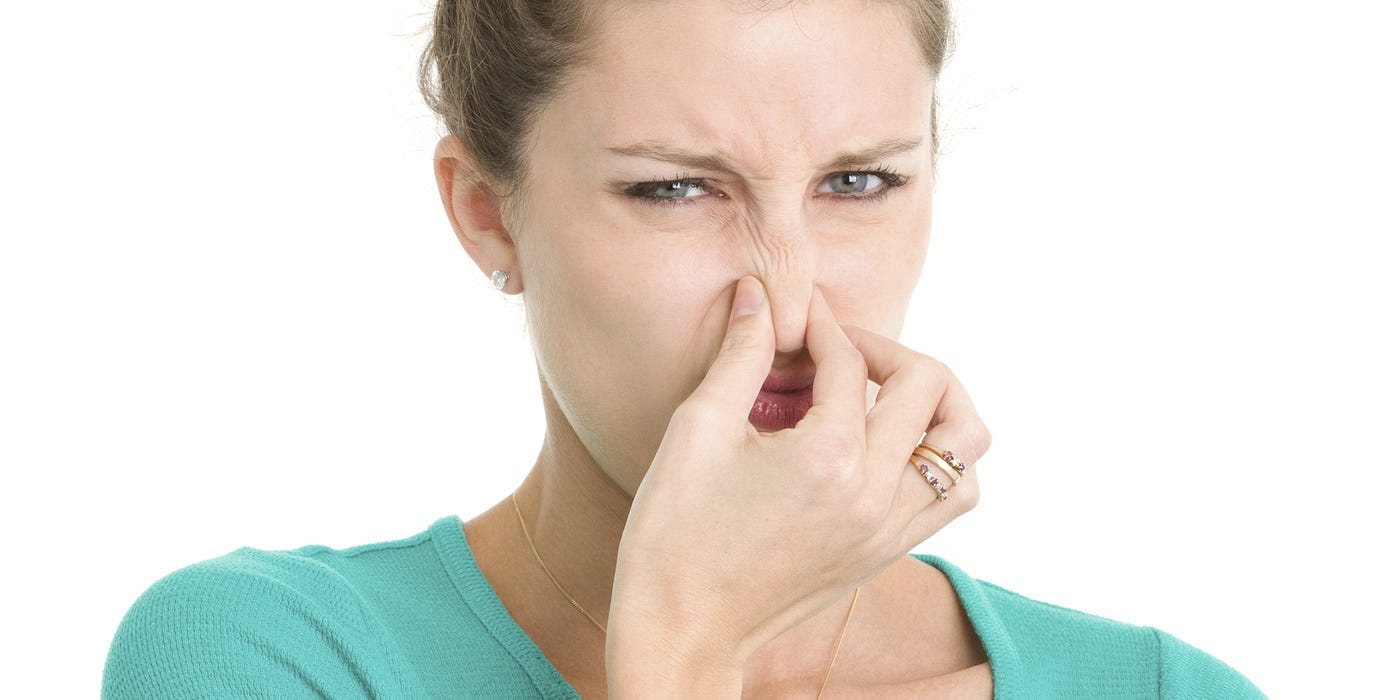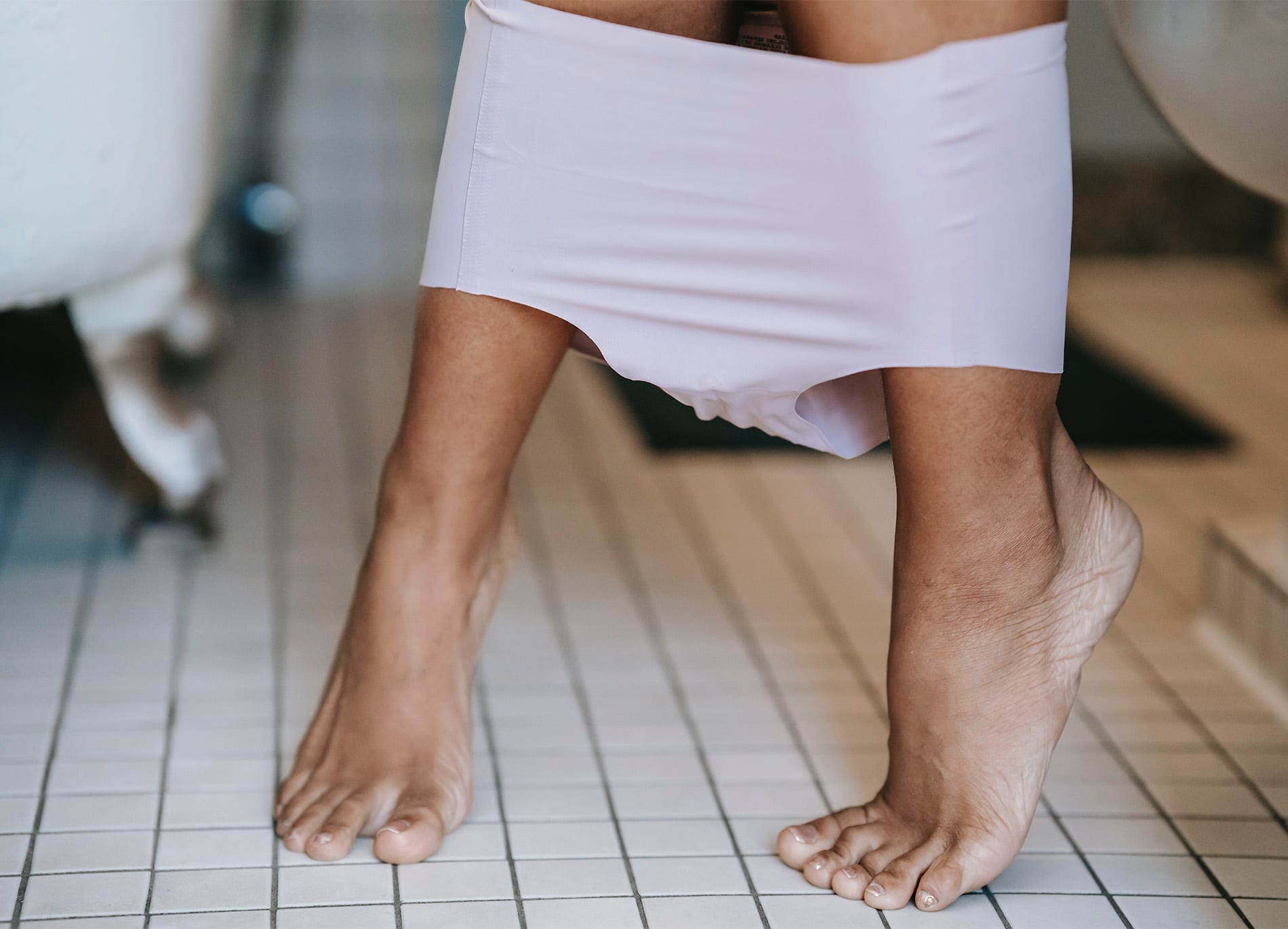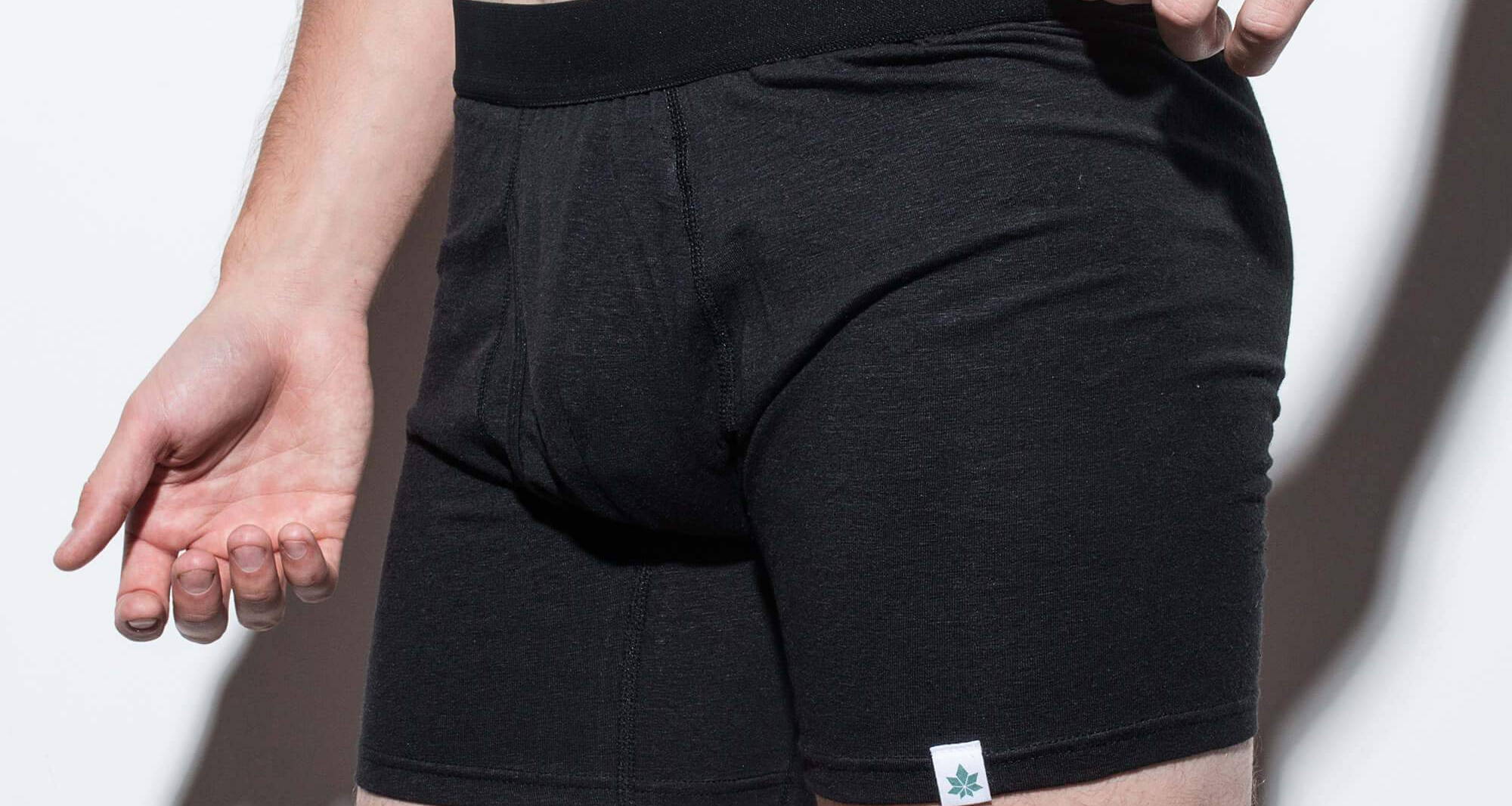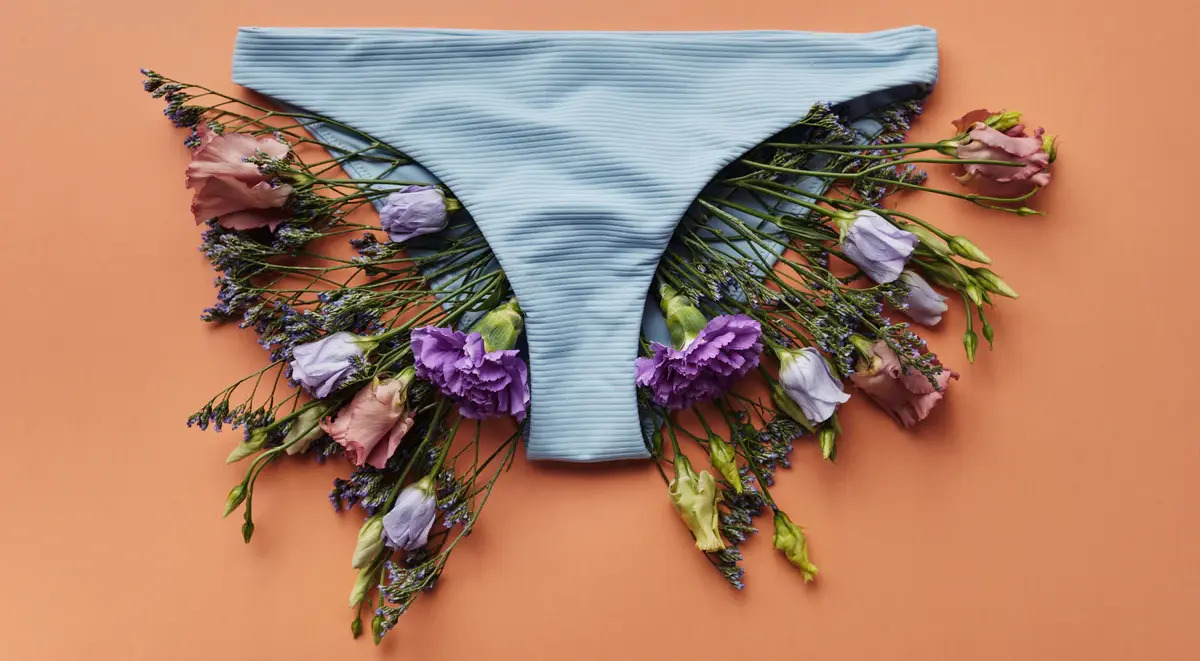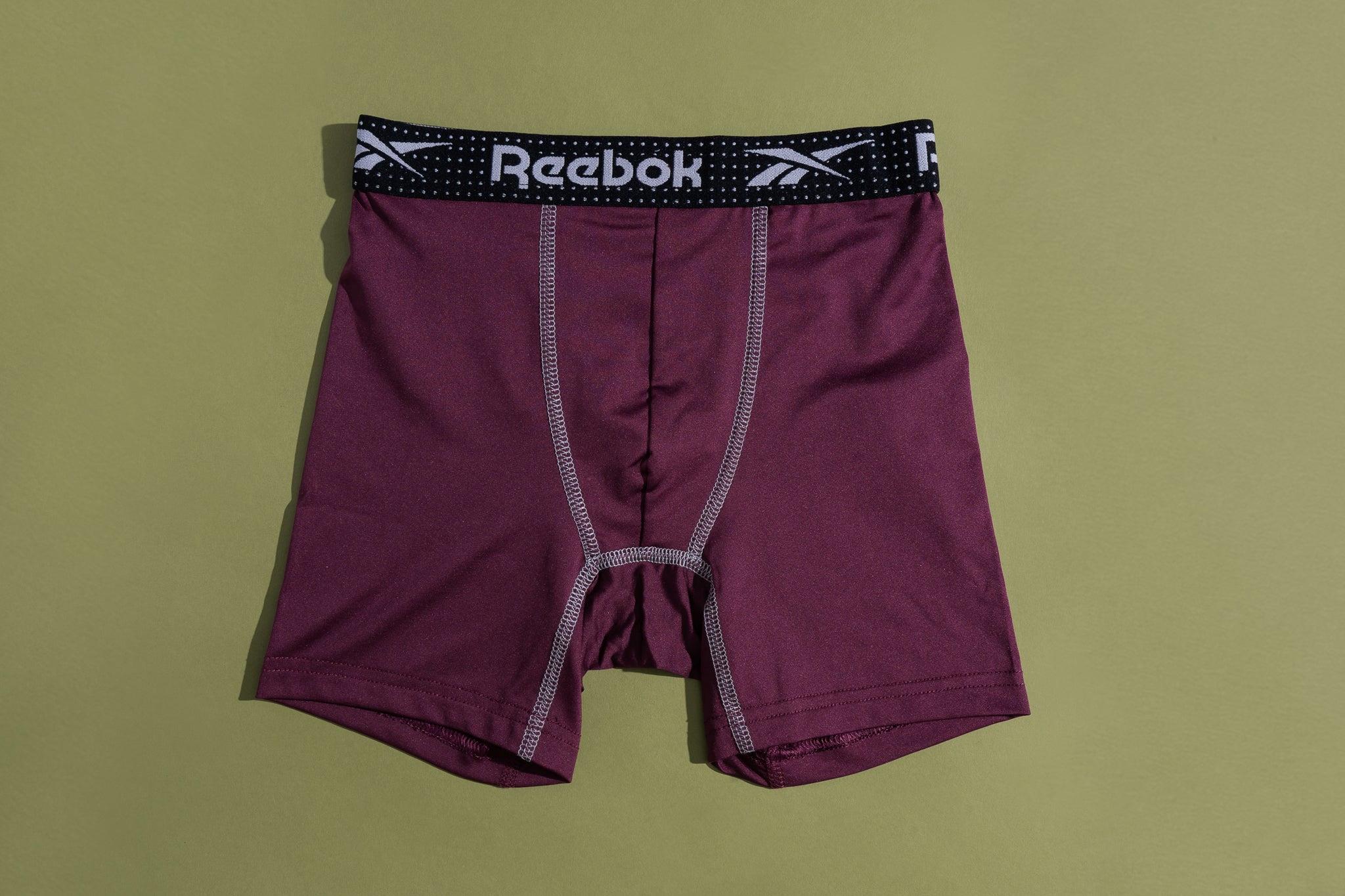

FAQs
Why Do I Get Holes In My Underwear
Published: July 31, 2023
Wondering why you have holes in your underwear? Find answers to your general questions and learn how to prevent them from occurring.
(Many of the links in this article redirect to a specific reviewed product. Your purchase of these products through affiliate links helps to generate commission for Under-tec.com, at no extra cost. Learn more)
Table of Contents
- Introduction
- Common reasons for holes in underwear
- Wear and tear
- Poor quality fabric
- Incorrect washing and drying methods
- Friction and rubbing
- Panty lace or embellishments
- Health and hygiene factors
- Fungal or bacterial infections
- Sweat and moisture buildup
- Skin conditions or allergies
- Prevention and care tips
- Invest in quality underwear
- Follow proper washing and drying techniques
- Opt for seamless underwear
- Maintain good personal hygiene
- Treat any infections or skin conditions promptly
- Conclusion
Introduction
Undoubtedly, finding holes in your underwear can be quite frustrating. You may wonder, “Why do I get holes in my underwear?” Well, you’re not alone. Many people experience this issue, and there are several common reasons behind it. In this article, we’ll delve into the various factors that can lead to holes in your underwear and provide some helpful tips to prevent them.
It’s important to understand that the lifespan of underwear can vary depending on various factors, such as the quality of the fabric, washing methods, and how often they are worn. While it’s normal for underwear to wear out over time due to regular use, excessive holes can be a cause for concern.
This article aims to shed light on the common causes of holes in underwear and provide insights into maintaining underwear’s longevity. Additionally, we’ll explore the impact of certain health and hygiene factors that can contribute to the deterioration of underwear. By understanding these factors and implementing appropriate preventive measures, you can extend the lifespan of your underwear and save yourself from repeated wardrobe malfunctions.
Now, let’s dive into the common reasons behind those frustrating holes and learn how to combat them effectively!
Common reasons for holes in underwear
There are several common reasons why you may find holes in your underwear. Let’s explore some of these factors:
- Wear and tear: Over time, regular use and washing can cause the fabric of your underwear to weaken, leading to holes. Friction from sitting, walking, and movement can gradually wear down the fabric, especially in areas that experience more pressure.
- Poor quality fabric: Cheaply made underwear with low-quality fabrics is more prone to developing holes. Thin, flimsy materials are more likely to tear or wear out quickly, especially in areas that come into direct contact with your skin.
- Incorrect washing and drying methods: Rough handling, using harsh detergents, or washing your underwear at high temperatures can weaken the fabric, making it more susceptible to tearing or developing holes. Similarly, using high-heat settings in the dryer can cause shrinkage or damage the fabric fibers.
- Friction and rubbing: Certain activities or clothing can create additional friction and rubbing against your underwear, leading to holes. For example, wearing jeans with rough seams, sitting for long periods, or engaging in high-impact activities can increase the wear and tear on your underwear.
- Panty lace or embellishments: Underwear with delicate lace trims, decorative patterns, or embellishments may be more prone to developing holes. These intricate designs can weaken the fabric, making it susceptible to tearing or unraveling.
It’s important to note that these factors can contribute individually or in combination to the development of holes in your underwear. Identifying the specific cause can help you address it effectively and prevent future damage.
Wear and tear
One of the most common reasons for holes in underwear is wear and tear. Over time, the fabric of your underwear naturally deteriorates with regular use and washing. The constant friction and movement against your body, combined with the pressure of sitting and walking, can gradually weaken the fabric, leading to holes and tears.
The areas of underwear that experience the most wear include the crotch area, where friction against clothing and body movement is highest. Additionally, the waistband and leg openings can also be susceptible to wear and tear due to repeated stretching and pulling. As the fabric becomes worn out, it becomes more vulnerable to holes and rips.
To minimize wear and tear on your underwear, it’s crucial to choose high-quality underwear made from durable materials. Look for underwear made with reinforced stitching and strong fabrics that can withstand regular use. Additionally, opt for underwear that fits you well without being too tight or too loose. Ill-fitting underwear can cause extra friction and rubbing, accelerating the wear and tear process.
Regularly inspect your underwear for any signs of wear, such as thinning fabric or loose threads, and consider replacing them before they develop holes. It’s also essential to follow proper washing methods to extend the longevity of your underwear. Avoid using harsh detergents or bleach and opt for a gentle cycle in the washing machine. Instead of using high heat in the dryer, air-drying your underwear can help preserve the fabric and prevent further damage.
Remember, wear and tear is a natural process for any garment, and it’s normal for underwear to develop some signs of aging over time. However, by choosing quality underwear and taking proper care of them, you can significantly prolong their lifespan and reduce the occurrence of holes.
Poor quality fabric
The quality of the fabric used to make your underwear plays a significant role in its durability and resistance to holes. Underwear made from poor quality fabric is more likely to develop holes and tears, even with minimal use.
Cheaply made underwear often uses thin, flimsy materials that lack the strength and durability necessary to withstand regular wear and washing. These fabrics may also have loose weaves or low thread count, making them more prone to tearing or developing holes.
When shopping for underwear, it’s important to look for brands that prioritize quality and use high-quality fabrics. Fabrics like cotton, modal, bamboo, and microfiber are known for their durability and ability to withstand repeated use. These fabrics are less likely to wear out or develop holes compared to low-grade polyester or nylon blends.
In addition to the fabric itself, pay attention to the construction of the underwear. Look for underwear with reinforced seams and double stitching, as these details contribute to the overall strength and longevity of the garment. Taking the time to examine the quality of the fabric and construction can help you select underwear that is less likely to develop holes.
If you find that your underwear made from poor quality fabric tends to develop holes quickly, it may be worth investing in higher-quality options. While they may come at a higher price, the longevity and overall value they provide will make them a worthwhile investment in the long run.
Remember, choosing underwear made from high-quality fabric not only reduces the chances of holes and tears but also ensures comfort and breathability, enhancing your overall wearing experience.
Incorrect washing and drying methods
The way you wash and dry your underwear can greatly impact its longevity and susceptibility to developing holes. Incorrect washing and drying methods can weaken the fabric fibers, leading to tears, fraying, and ultimately, holes.
One common mistake is using harsh detergents or bleach when washing your underwear. These products can be too abrasive for delicate fabrics and may cause them to break down over time. Instead, opt for mild, gentle detergents specifically designed for delicate fabrics or underwear. These detergents are formulated to cleanse without causing damage.
Another important factor to consider is the water temperature. Washing underwear in hot water can cause the fabric fibers to shrink and weaken, making them more prone to holes. It’s best to use lukewarm or cool water for washing your underwear to prevent excessive damage.
When it comes to drying, high heat can be detrimental to the fabric integrity. The intense heat in the dryer can cause shrinkage and damage the fibers, leading to holes or tears. To avoid this, opt for air-drying your underwear whenever possible. Hang them up or lay them flat on a drying rack, allowing them to air-dry naturally. If using a dryer, choose a low heat or delicate setting to minimize the risk of damage.
Furthermore, avoid overstuffing the washing machine or dryer when laundering your underwear. Overcrowding can lead to excessive friction, tangling, and stretching, which can weaken the fabric and increase the chances of holes. Allow enough space for your underwear to move and wash them separately or with like-colored items to avoid potential damage.
By following proper washing and drying techniques, you can significantly extend the lifespan of your underwear and reduce the occurrence of holes. Taking a little extra care during the laundering process will go a long way in preserving the integrity of the fabric and ensuring that your underwear stays in good condition for longer.
Friction and rubbing
Friction and rubbing against various surfaces can contribute to the development of holes in your underwear. Certain activities or clothing choices can increase the amount of friction your underwear is exposed to, leading to wear and tear.
One common source of friction is wearing jeans or pants with rough seams. The seams can rub against the fabric of your underwear, causing it to weaken and eventually develop holes. Similarly, clothing with abrasive textures or embellishments, such as sequins or studs, can also create friction against your underwear, leading to damage over time.
Sitting for long periods can also create friction between your body and the seat, causing increased wear on the fabric of your underwear. Similarly, engaging in high-impact activities like running or exercising can increase movement and friction, putting additional strain on your underwear.
To minimize friction-related damage, opt for underwear made from smooth, soft fabrics that glide against your skin and reduce the friction generated. Seamless underwear is an excellent choice as it eliminates the presence of seams that can cause rubbing and irritation.
If you frequently wear jeans or other clothing items with rough seams, consider wearing a thin, breathable layer between your underwear and the outer garment. This extra layer acts as a buffer, reducing direct friction and protecting your underwear from unnecessary wear.
Additionally, it’s important to ensure that the underwear you choose fits you properly. If your underwear is too tight, it can increase friction and rubbing, accelerating the development of holes. On the other hand, loose-fitting underwear can also cause friction due to excessive movement and rubbing against your body.
By being mindful of the activities you engage in and the clothing you wear, you can reduce the friction and rubbing that your underwear is exposed to. This, in turn, will minimize damage and help prevent holes from forming.
Panty lace or embellishments
Panties with lace trims, decorative patterns, or embellishments can add a touch of style and femininity to your underwear collection. However, these intricate designs can also impact the durability of your underwear and potentially lead to the development of holes.
Lace, while delicate and beautiful, is prone to fraying and unraveling. The fine threads and delicate patterns can become tangled or snagged, leading to small tears or holes in the fabric. Similarly, decorative patterns or embellishments like sequins, beads, or embroidery can create areas of weakness in the fabric, making it more susceptible to damage.
To minimize the risk of holes caused by lace or embellishments, consider opting for panties with reinforced lace edges or secure stitching. These features add extra strength and stability to the fabric, reducing the chances of the lace or embellishments tearing or pulling away from the underwear.
Additionally, be mindful of how you care for and wash your panties with lace or embellishments. Handwashing these delicate pieces or using a mesh laundry bag can protect them from excessive agitation that can lead to damage. Avoid using harsh detergents or bleach on these delicate pieces and opt for gentle, mild detergents specifically designed for delicate fabrics.
If you notice that the lace or embellishments on your underwear are starting to unravel or come loose, it’s best to address the issue promptly. Use a small, sharp pair of scissors to carefully trim any loose threads or secure them to prevent further damage.
While panties with lace or embellishments can be aesthetically pleasing, it’s important to understand that they require a bit more care and attention to maintain their integrity. By choosing well-made panties with reinforced details and following proper care instructions, you can enjoy the beauty of these designs without sacrificing their durability.
Health and hygiene factors
While wear and tear, poor quality fabric, incorrect washing, and friction contribute to the development of holes in underwear, certain health and hygiene factors can also play a role. Let’s explore how these factors can impact the condition of your underwear.
- Fungal or bacterial infections: Infections such as yeast infections or bacterial vaginosis can affect the pH balance and moisture levels in the genital area. These conditions can produce more acidic or alkaline secretions, which can be harsh on fabrics and cause them to weaken over time. In some cases, the infections themselves can cause itching or discomfort, leading to unintentional scratching that can further damage the fabric and create holes.
- Sweat and moisture buildup: Excessive sweat and moisture trapped in your underwear can create an environment that promotes the growth of bacteria and fungi. These organisms can contribute to the breakdown of fabric fibers, making them more susceptible to developing holes. It’s important to change out of sweaty or damp underwear as soon as possible to minimize the risk of damage.
- Skin conditions or allergies: Skin conditions like eczema or dermatitis, as well as allergies to certain materials or fabrics, can cause itching, redness, and irritation. Continuous scratching or rubbing of the affected area can lead to tears or holes in the underwear. Managing these skin conditions and avoiding fabrics that trigger allergies can help reduce the risk of damage to your underwear.
Paying attention to your health and practicing good hygiene can help minimize these factors’ impact on the condition of your underwear. Here are a few tips to consider:
- Keep your genital area clean and dry. Change out of sweaty or damp underwear promptly to prevent the growth of bacteria and fungi.
- Address any infections or skin conditions promptly and follow the recommended treatment plan.
- Choose underwear made from breathable fabrics, like cotton, that allow air circulation and help wick away moisture.
- Consider using panty liners during your period to absorb moisture and protect your underwear.
- Avoid using scented or harsh soaps, detergents, or fabric softeners, as they can irritate the skin and weaken the fabric.
By taking care of your health and practicing good hygiene habits, you can reduce the likelihood of developing holes in your underwear and maintain their overall condition.
Fungal or bacterial infections
Fungal or bacterial infections can have an impact on the condition of your underwear and contribute to the development of holes. These infections can disrupt the normal pH balance and moisture levels in the genital area, creating an environment that is harsh on fabrics and can weaken them over time.
Conditions such as yeast infections or bacterial vaginosis can produce more acidic or alkaline secretions, which can have a corrosive effect on the fabric of your underwear. This can break down the fibers and make them more susceptible to developing holes or tears.
In addition to the direct impact of the secretions, the itching and discomfort caused by these infections can also lead to unintentional scratching or rubbing of the genital area. This repetitive friction against the fabric can weaken it further and contribute to the formation of holes.
To minimize the impact of fungal or bacterial infections on your underwear, it’s important to address these conditions promptly and follow the recommended treatment plan provided by a healthcare professional. By effectively managing the infection, you can prevent the excessive production of acidic or alkaline secretions, reducing the risk of damage to the fabric.
Additionally, practicing good hygiene habits can help maintain the cleanliness and integrity of your underwear. Make sure to change out of damp or sweaty underwear as soon as possible, as the moisture can create an environment that promotes bacterial or fungal growth. Keeping the genital area clean and dry will help prevent the accumulation of secretions that can be harsh on the fabric.
It’s worth noting that certain types of underwear fabric may be more resistant to the effects of fungal or bacterial infections. Breathable fabrics, like cotton, allow for better air circulation and can help wick away moisture, reducing the risk of excessive exposure to acidic or alkaline secretions. Consider choosing underwear made from these materials to minimize the impact of infections on the condition of your underwear.
By addressing any fungal or bacterial infections promptly, practicing good hygiene, and opting for underwear made from breathable fabrics, you can reduce the likelihood of developing holes in your underwear and help maintain their overall condition.
Sweat and moisture buildup
Sweat and moisture buildup in your underwear can create an environment that is conducive to the growth of bacteria and fungi. This, in turn, can impact the condition of your underwear and contribute to the development of holes.
When you sweat, especially in areas where there is direct contact with your underwear, moisture becomes trapped in the fabric. This can create a damp environment that promotes bacterial and fungal growth. The presence of these microorganisms can weaken the fabric fibers, making them more susceptible to damage and causing holes to form over time.
It’s important to change out of sweaty or damp underwear as soon as possible to minimize the risk of moisture buildup. This is particularly crucial after engaging in physical activity or during hot and humid weather.
Choosing underwear made from moisture-wicking fabrics, such as cotton, can help absorb and pull moisture away from your skin, reducing the likelihood of prolonged sweat and moisture exposure. These breathable fabrics allow for better air circulation, which helps to keep the genital area dry and prevent the growth of bacteria and fungi.
Another tip to minimize sweat and moisture buildup is to consider using panty liners during your period. Panty liners can help absorb excess moisture, protecting your underwear from prolonged exposure and reducing the risk of damage.
Proper hygiene practices also play a significant role in managing sweat and moisture buildup. Regularly washing your underwear using mild, gentle detergents can help remove sweat, bacteria, and fungi that may have accumulated. Avoid using harsh soaps or fabric softeners, as they can irritate the skin and potentially weaken the fabric.
By being aware of sweat and moisture buildup in your underwear and taking appropriate measures to manage it, such as changing out of damp underwear promptly and selecting moisture-wicking fabrics, you can minimize the risk of developing holes and help maintain the overall condition of your underwear.
Skin conditions or allergies
Skin conditions or allergies can have an impact on the condition of your underwear and contribute to the development of holes. Conditions like eczema, dermatitis, or allergies to certain materials or fabrics can cause itching, redness, and irritation in the genital area.
Continuous scratching or rubbing of the affected area can weaken the fabric of your underwear and lead to tears or holes. The repetitive friction against the fabric can break down the fibers and compromise their integrity over time.
If you have a known skin condition or allergy, it’s important to manage it effectively to reduce its impact on your underwear. Consult with a healthcare professional to identify triggers and develop a treatment plan that works for you.
One way to minimize the risk of skin conditions or allergies affecting your underwear is to choose fabrics that are less likely to cause irritation. Natural fabrics like cotton are generally gentle on the skin and less likely to trigger allergic reactions or exacerbate existing skin conditions. Look for underwear made from hypoallergenic materials and avoid synthetic fabrics or those treated with harsh chemicals.
Caring for your underwear properly is also vital in managing skin conditions or allergies. Opt for a gentle, mild detergent specifically designed for delicate fabrics or sensitive skin. Avoid using fabric softeners or harsh soaps, as these can cause further irritation and potentially weaken the fabric of your underwear.
It’s worth noting that proper personal hygiene also plays a role in managing skin conditions or allergies and their impact on your underwear. Keep the genital area clean and dry to minimize the risk of irritation and prevent excessive sweat or moisture buildup that can contribute to the deterioration of the fabric. Changing out of sweaty or damp underwear promptly can also help reduce the risk of further damage.
By effectively managing your skin conditions or allergies, choosing underwear made from gentle fabrics, following proper care instructions, and practicing good personal hygiene, you can minimize the impact on your underwear and help maintain their overall condition.
Prevention and care tips
To prevent the occurrence of holes in your underwear and maintain their longevity, it’s important to follow some preventive measures and take proper care of your underwear. Here are some tips to help you keep your underwear in excellent condition:
- Invest in quality underwear: Opt for underwear made from high-quality materials and with sturdy construction. Look for reinforced seams and durable fabrics that can withstand regular wear and washing.
- Follow proper washing and drying techniques: Use a gentle, mild detergent and avoid harsh chemicals that can weaken the fabric. Wash your underwear using lukewarm or cool water to prevent shrinkage and damage. Air-drying is preferable to using a dryer, but if you do use a dryer, choose a low heat or delicate setting.
- Opt for seamless underwear: Seamless underwear reduces friction and rubbing, minimizing the chances of developing holes. Look for underwear that is designed without visible seams that can cause irritation or weaken the fabric.
- Maintain good personal hygiene: Keep your genital area clean and dry to prevent the growth of bacteria and fungi. Change out of damp or sweaty underwear promptly to minimize the risk of moisture buildup, which can weaken the fabric.
- Treat any infections or skin conditions promptly: If you develop a fungal or bacterial infection or have a skin condition, seek medical attention and follow the recommended treatment plan. Effective management of these conditions can minimize their impact on your underwear.
By implementing these prevention and care tips, you can extend the lifespan of your underwear and reduce the occurrence of holes. Remember, investing in high-quality underwear and practicing proper care and hygiene will not only help maintain the condition of your underwear but also ensure your comfort and confidence when wearing them.
Invest in quality underwear
When it comes to preventing holes in your underwear, investing in quality pieces is essential. High-quality underwear is made with durable materials and constructed with attention to detail, providing a longer lifespan and reducing the likelihood of holes or tears.
When shopping for underwear, take the time to research reputable brands known for their commitment to quality. Look for underwear made from fabrics that are known for their durability, such as cotton, modal, bamboo, or microfiber. These fabrics are less likely to wear out quickly or develop holes compared to low-grade polyester or nylon blends.
In addition to the fabrics used, pay attention to the construction of the underwear. Look for reinforced seams, double stitching, and quality elastic bands that will withstand regular wear and washing. The attention to detail in the construction process reflects the overall quality and longevity of the underwear.
While quality underwear may come with a higher price tag, it’s important to think of the investment in terms of longevity. Spending a little more for a durable pair of underwear will save you money in the long run, as you’ll need to replace them less frequently.
Moreover, quality underwear provides enhanced comfort and support, making it a worthwhile investment for your overall well-being. Well-made underwear will fit you properly and maintain its shape, providing you with the comfort and confidence you need throughout the day.
Remember to read reviews and consider recommendations from others when selecting brands or specific styles. This will help you make more informed choices and invest in underwear that has a track record of quality and customer satisfaction.
By choosing to invest in quality underwear, you can significantly reduce the chances of developing holes and tears. Not only will you enjoy longer-lasting underwear, but you’ll also experience enhanced comfort and confidence in your daily activities.
Follow proper washing and drying techniques
Proper washing and drying techniques are crucial for maintaining the integrity of your underwear and preventing the development of holes. By following these techniques, you can ensure that your underwear stays in excellent condition for as long as possible.
Start by using a gentle, mild detergent specifically formulated for delicate fabrics or underwear. Harsh detergents can be too abrasive and cause damage to the fabric fibers over time. Avoid using bleach or strong chemicals, as they can weaken the fabric as well.
When it comes to water temperature, use lukewarm or cool water to wash your underwear. Hot water can cause shrinkage and weaken the fabric fibers, making them more susceptible to holes. If you have any stains or stubborn dirt on your underwear, pretreat them before washing using a stain remover that is safe for the fabric.
It’s best to wash your underwear separately or with like-colored items to prevent color bleeding. Overcrowding the washing machine can lead to excessive friction and rubbing, which can weaken the fabric. Follow the care instructions on the garment carefully, especially if your underwear has specific washing requirements.
When it comes to drying your underwear, air-drying is the gentlest option. Hang them up or lay them flat on a drying rack, preferably in a well-ventilated area. Direct sunlight can fade colors, so it’s best to avoid prolonged exposure to the sun. If you must use a dryer, choose a low heat or delicate setting. High heat can cause shrinkage and damage the fabric fibers, leading to holes or tears.
Avoid using fabric softeners or dryer sheets when drying your underwear, as they can leave a residue on the fabric and reduce its breathability. Softeners can also weaken the elasticity of the waistband or leg openings over time.
By following proper washing and drying techniques, you can preserve the quality and condition of your underwear. The gentle care and attention given during these processes will help minimize the risk of damage to the fabric and reduce the likelihood of developing holes.
Opt for seamless underwear
When it comes to preventing holes in your underwear and increasing overall comfort, opting for seamless underwear is a smart choice. Seamless underwear is designed without visible seams that can cause irritation, friction, and ultimately, holes in the fabric.
The absence of seams reduces the chances of rubbing or digging into your skin, minimizing the wear and tear on the fabric. Without seams, the fabric is able to glide smoothly against your body, reducing friction and preventing unnecessary strain on the material.
Seams are often a common area where holes can develop, especially in areas that experience more movement or pressure, such as the crotch or waistband. With seamless underwear, these vulnerable areas are eliminated, reducing the risk of holes forming over time.
Seamless underwear is crafted using advanced weaving techniques that seamlessly integrate the fabric together, ensuring a smooth and comfortable fit. This not only enhances the overall wearing experience but also provides a sleek appearance under clothing, without visible lines or bulges.
Additionally, seamless underwear is known for its excellent stretch and flexibility. The absence of seams allows the fabric to stretch comfortably, contouring to your body shape without compromising its integrity.
When purchasing seamless underwear, it’s important to choose the right size to ensure a snug yet comfortable fit. Underwear that is too tight can stretch the fabric excessively, increasing the risk of holes, while underwear that is too loose may create unnecessary friction and movement.
Overall, opting for seamless underwear is a proactive step in preventing holes and tears. The seamless design reduces friction, provides a comfortable fit, and enhances the durability of the fabric. With seamless underwear, you can enjoy both comfort and longevity, without the annoyance of unexpected holes in your underwear.
Maintain good personal hygiene
Practicing good personal hygiene plays a crucial role in preventing holes in your underwear and preserving their condition. By taking proper care of your body and maintaining cleanliness, you can minimize factors that contribute to the deterioration of your underwear.
One important aspect of personal hygiene is keeping your genital area clean and dry. Moisture can create an environment that promotes the growth of bacteria and fungi, leading to increased wear and tear on the fabric. After bathing or using the restroom, make sure to thoroughly dry your genital area before putting on underwear. This helps minimize the risk of excessive moisture buildup that can weaken the fabric over time.
Regularly changing your underwear is also vital for maintaining good personal hygiene. Wearing the same pair of underwear for an extended period allows sweat and bacteria to accumulate, which can be harsh on the fabric and contribute to the development of holes. Change your underwear daily and consider changing more frequently if you engage in activities that cause excessive sweating or moisture buildup.
In addition to changing your underwear regularly, it’s important to wash them properly. Follow the recommended washing instructions for your specific underwear, using gentle, mild detergents that are suitable for delicate fabrics. Harsh detergents or bleaches can weaken the fabric fibers and make them more susceptible to holes or tears. Avoid excessive agitation during the washing process to minimize wear and tear on the fabric.
Another crucial aspect of personal hygiene is addressing any infections or skin conditions promptly. Fungal or bacterial infections, as well as skin conditions like eczema or dermatitis, can cause itching and discomfort. Continuous scratching or rubbing can weaken the fabric of your underwear and lead to holes. Seek medical attention for the proper diagnosis and treatment of any infections or skin conditions to minimize their impact on your underwear.
By maintaining good personal hygiene, including keeping your genital area clean and dry, changing your underwear regularly, and addressing any infections or skin conditions promptly, you can greatly reduce the chances of developing holes in your underwear. Remember, your personal hygiene habits directly contribute to the overall longevity and condition of your underwear.
Treat any infections or skin conditions promptly
Timely treatment of infections or skin conditions is essential not only for your overall health but also to prevent further damage to your underwear. Infections and skin conditions can cause itching, discomfort, and potentially lead to holes in your underwear if left untreated.
If you notice any signs of an infection or skin condition, such as redness, irritation, or unusual discharge, it’s important to seek medical attention for a proper diagnosis and treatment plan. Common examples include yeast infections, bacterial vaginosis, eczema, or dermatitis.
Fungal or bacterial infections can alter the pH balance in your genital area and produce secretions that can be harsh on fabrics, weakening them over time. These secretions can corrode the fabric fibers and contribute to the development of holes or tears.
When left untreated, infections can cause itching or discomfort, leading to unintentional scratching or rubbing of the genital area. The repetitive friction against the fabric can weaken it further and hasten the formation of holes.
By addressing infections or skin conditions promptly, you can reduce their impact on your underwear. Follow the treatment plan prescribed by your healthcare professional, which may include medications such as antifungal or antibacterial creams, oral medications, or lifestyle changes.
In addition to treatment, practicing good hygiene habits is crucial in managing infections or skin conditions. Keep the genital area clean and dry, and avoid using harsh soaps or products that can irritate the skin. It’s also advisable to wear breathable underwear made from natural fabrics to allow air circulation and minimize moisture buildup.
Regularly replacing your underwear during and after treatment is recommended to ensure that any lingering bacteria or fungi are eliminated. This will help prevent reinfection and protect the longevity of your underwear.
Remember, prioritizing the treatment of infections or skin conditions is not only important for your overall well-being but also for maintaining the condition of your underwear. By seeking timely medical attention, following the prescribed treatment plan, and practicing good personal hygiene, you can minimize the impact of infections or skin conditions on your underwear and prevent the development of holes.
Conclusion
Preventing holes in your underwear requires a combination of proactive measures and proper care. By understanding the common reasons for holes, such as wear and tear, poor quality fabric, incorrect washing and drying methods, friction and rubbing, and lace or embellishments, you can take steps to minimize their impact. Additionally, considering the health and hygiene factors, including fungal or bacterial infections, sweat and moisture buildup, and skin conditions or allergies, will further help in maintaining the integrity of your underwear.
Investing in quality underwear made from durable fabrics and following proper washing and drying techniques are key preventive measures. Opting for seamless underwear reduces friction and rubbing, while maintaining good personal hygiene, including regular changing of underwear and treating any infections or skin conditions promptly, is vital in preserving their condition.
Remember, prevention is better than cure. By incorporating these prevention and care tips into your routine, you can significantly reduce the chances of developing holes in your underwear. This will not only save you from the frustration of unexpected wardrobe malfunctions but also ensure the longevity and comfort of your underwear.
Keep in mind that every body and situation is unique, so it’s important to find what works best for you. Pay attention to the specific needs and sensitivities of your body, and make adjustments accordingly. Ultimately, by taking good care of your underwear, you’ll prolong their lifespan and enjoy the benefits of comfortable and hole-free undergarments.
